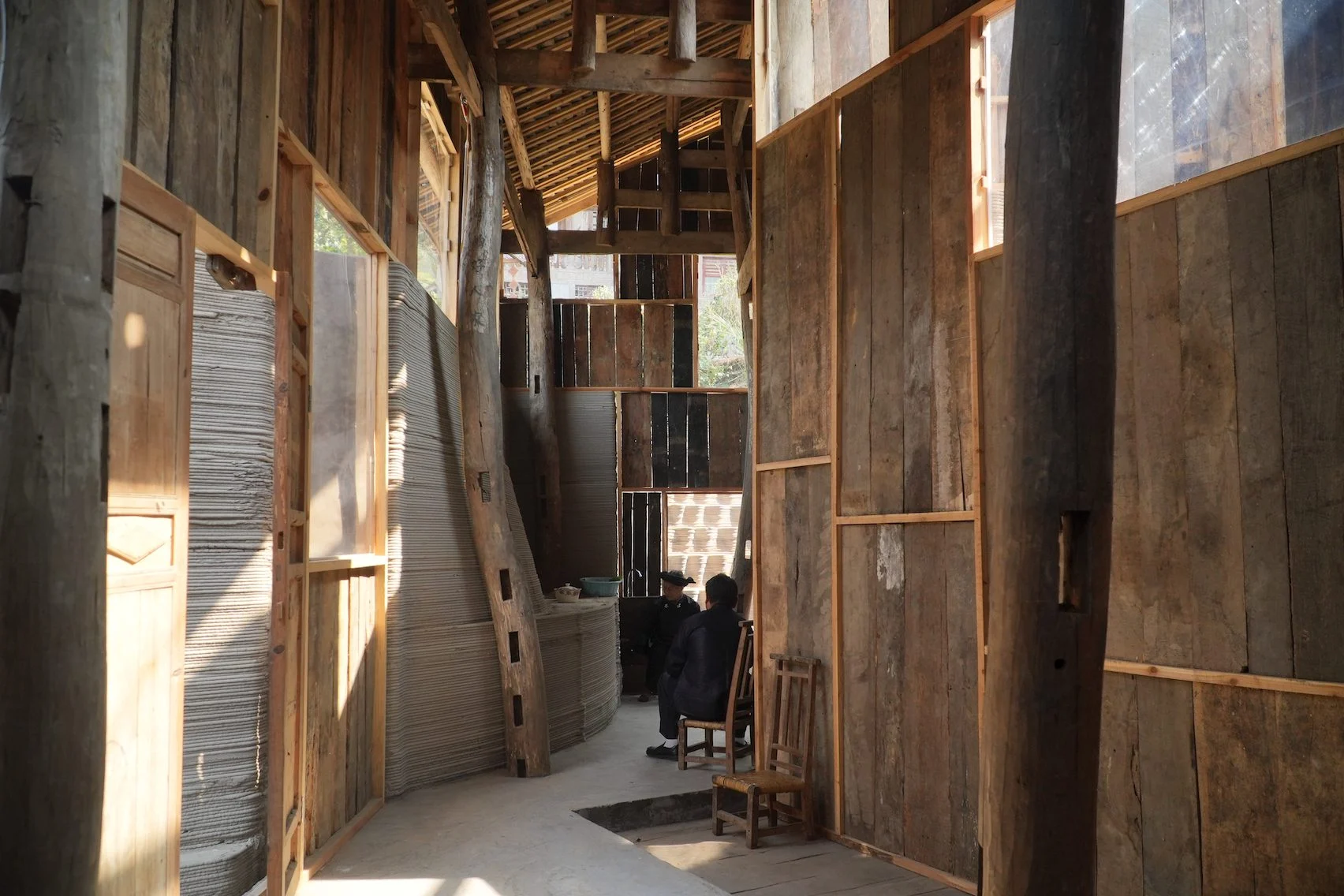In a groundbreaking initiative, professors John Lin and Lidia Ratoi from the University of Hong Kong have merged an old dilapidated wooden house in China with a 3D printed structure, giving birth to the Traditional House of the Future. This project is part of a larger government plan aimed at renovating hundreds of aged wooden houses in Nanlong Village, southwest China.
The process began with a thorough scan of the original house, which was then dismantled and expanded, supported by 3D printed walls. By integrating the new walls, the living space of the traditional house was enlarged, with additional dividing walls creating an entrance courtyard, kitchen, and bathrooms.

The project emphasizes the potential of technology as a means to reinforce local and cultural building practices. By treating the existing built fabric as a ‘new nature’ requiring adaptation rather than alteration, the Traditional House of the Future encompasses sustainability in social, technological, and cultural aspects.
The design concept draws inspiration from Lin and Sony Devabhaktuni’s research on innovative renovations of vernacular houses in rural China. Their approach views ancient dwellings as continuously flexible design structures capable of adapting to changing lifestyles, rather than solely preserving cultural heritage. As rural China experiences shifts in lifestyle, the lack of flexible spaces in traditional wooden houses has led to abandonment. The addition of 3D-printed walls allows locals to repurpose these old houses and reassemble them into new homes.

This prototype exemplifies how 3D printing technology can be employed for flexible house renovations, catering to the evolving needs of communities. It encapsulates the dynamic nature of transitioning lifestyles at the intersection of tradition and modernity.
As 3D printing technology revolutionizes construction and architects push boundaries with innovative designs, these projects showcase the exciting possibilities of merging tradition and modernity, ultimately shaping the future of architectural innovation.
Come and let us know your thoughts on our Facebook, Twitter, and LinkedIn pages, and don’t forget to sign up for our weekly additive manufacturing newsletter to get all the latest stories delivered right to your inbox.









